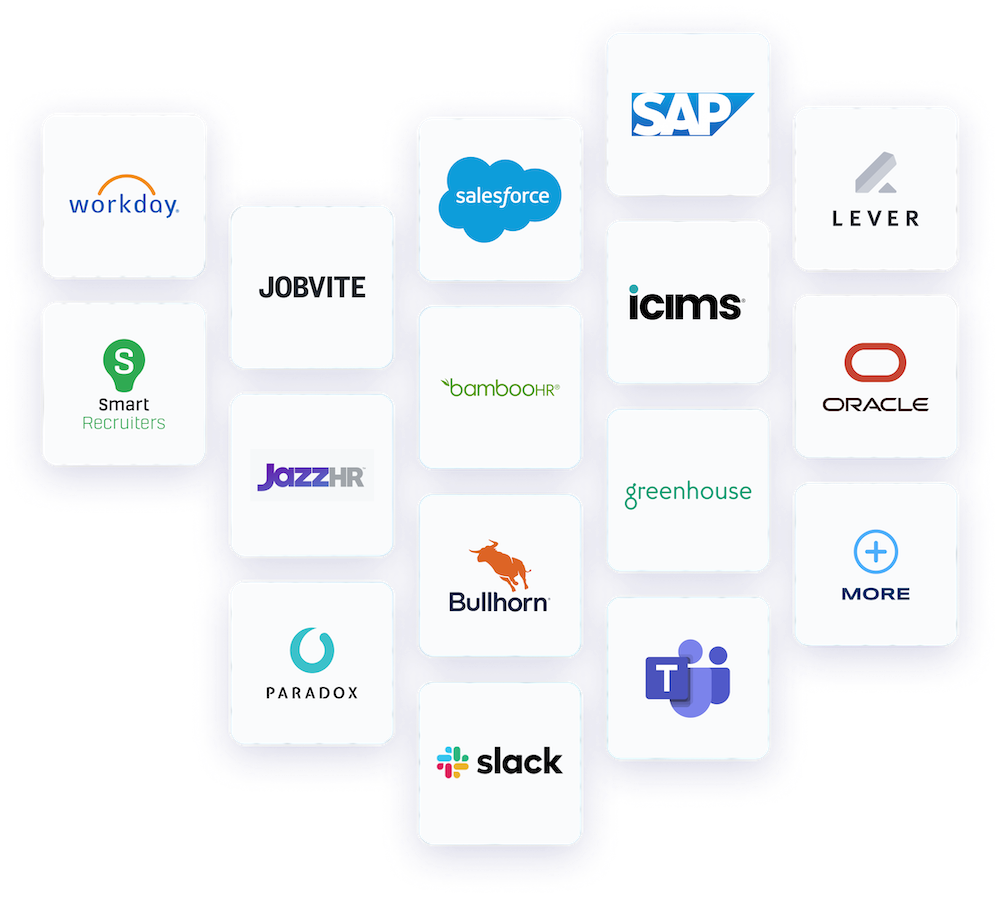

Crosschq Blog
How to Hire Employees in 2022 and Beyond

As the second half of 2022 works its way through the aftermath of a global-crisis-driven operating environment, attracting and retaining talent remains the top priority for many business leaders. A whopping 88% of executives continue to see rises in turnover, and 65% of employees are actively searching for new roles.
The Great Reshuffle of 2021 saw a workplace withdrawal rate that staggered organizations and set the stage for the most competitive labor market in years. The Bureau of Labor and Statistics predicts that employment will increase by nearly 12 million jobs from 2020 to 2030, with an anticipated $8.5 trillion shortage in talent to fill these roles driving future unemployment rates.
As workers realized the power they now held, and remote work was proven to not only be viable but advantageous for employee and employer, both re-evaluated their priorities and values.
Mass resignations have been blamed on everything from government relief to employee laziness, but the truth is that workers are simply realizing their worth and are, for the first time in decades, in a position with leverage.
This means businesses are having to take a hard look at their own priorities when it comes to finding and keeping top talent. Top of the funnel hiring practices are being overhauled, and best practices are now focused on hiring for longevity, not simply to fill seats in the here and now.
Half of the HR leader respondents to one recent survey admitted that their company was not currently effective at hiring, onboarding, and retention. Moving the needle will be critical in what remains of 2022 and going forward.
Trends in Hiring
Trends in hiring have changed drastically over the past few years.
The Shift From Reactivity To Proactivity
Recruiting has shifted from reactive to proactive. When any employee may decide to leave an organization on any given day, filling empty slots isn’t the only thing to be concerned about. Workers can no longer be considered as simply cogs in the machine, easily replaced with plug-and-play adaptability.
Instead, the entire mechanism of an organization must be evaluated and vulnerabilities noted:
- Which existing roles and employees are key to uninterrupted business productivity?
- Where are skills gaps appearing, and where are they predicted to appear?
- If a key worker quits, how quickly could they be replaced, and at what cost?
- If a replacement cannot be found swiftly, what will the losses be in the interim?
- Are competitors snapping up the best talent? How? Why?
- What is the retention and attrition rate for entry and mid-level employees?
- Is the established company culture helping or hammering recruitment efforts?
- How is the organizational brand affecting hiring?
The Rise of Intentionality
Recruitment is also becoming more intentional. Recruiters must engage in high-level targeting, actively searching for candidates for specific positions. Hiring managers should identify potential roles to be filled before hiring demands are apparent.
Both recruiters and employers can benefit from the practice of creating groups or categories of candidates who can be contacted when specific jobs become available. By picking out potential employees before the hiring demands are apparent, talent pipelines and job openings can be filled more quickly with pre-qualified options.
Intentional recruiting teams will be able to significantly shorten time-to-hire with these “ready-now candidates,” creating opportunities for rapid placement and beating out the competition. By building relationships and nurturing talent pools for future posts, organizations can stay ahead of the game and ensure smooth transitions.
Recruiter Use of Social Media Channels
Businesses are leveraging social channels to grow their brands and generate leads, and employees are increasingly doing the same to showcase their value. Candidates now expect and welcome this type of digital interaction during the hiring process.
It’s not just LinkedIn anymore. Glassdoor and Indeed have become more worker-friendly as well, and applicant tracking systems (ATS) are designed to pull data automatically from such sources to flesh out candidate profiles.
Even earlier in the recruitment process, digital channels are critical for posting job opportunities. Industry-specific boards can help recruiters target the skills they are seeking. Searches can even be narrowed to candidates actively seeking new employment opportunities.
When your company uses modern recruitment tools like social media to identify promising talent profiles and build a relationship with your target audience, you are more likely to attract quality applicants and stay on top of hiring trends.
Diversity, Equity, Inclusion, and Belonging Are Key
Diversity, equity, inclusion, and belonging (DEIB) programs deliver positive business benefits. The need for gender and racial parity is clear: 71% of HR professionals say achieving gender parity at their company is a priority, and it’s become well-known that companies with diverse teams outperform non-diverse teams by more than 30%.
There is a long way to go when it comes to DEIB, but the awareness is finally pervasive. Nearly 3 out of 4 companies say they are actively doing at least one of the following:
- Offering training related to DEIB topics such as how to avoid unconscious bias
- Checking vendors and partners to ensure they also have a proven commitment to DEIB
- Making it easy for all employees to access DEIB guidelines and documents
- Utilizing an HR or DEIB consultant to create an actionable plan
Understanding What Employees Really Value
Employees want to be fairly paid for their efforts, but money isn’t the main driving factor for many when deciding where they want to work. Workers are seeking better work/life balance, and their demands skew more towards flexibility than sheer monetary compensation.

Organizations are working towards becoming attuned to what their employees really want and need. In 2022:
- 63% of employers said they offer most workers access
to a hybrid work model option
- 62% said they offer employees a subsidy/reimbursement
for at-home work equipment
- 78% of employers offer professional development/opportunities
to develop new skills
- 20% of organizations offer mental health days above
and beyond regular sick leave
- 93% of organizations offer telemedicine or telehealth
benefits to their employees
Conducting regular surveys can help gauge which benefits are valued most by employees and help align company values with worker values for a competitive edge in hiring.
The Focus On Soft Skills Is Expanding
Rather than zeroing in on specific roles that need filling, many organizations are taking a big picture approach, and seeking to fill skills gaps within the company. This is a pivot that can work exceptionally well when attempting to fill seats in the face of tough labor market competition.
If required hard skills can be readily learned or updated on the job, hiring for harder-to-access soft skills such as problem-solving, collaboration, and leadership may be the most viable option. Companies can follow up with in-house training as part of onboarding.
Taking this approach allows companies to build a robust company culture, invest in their employees, and create a future-proof workforce with low attrition rates. Employee loyalty automatically increases when companies show confidence in their abilities.
Remote Hiring
It’s not just work options that are remote; hiring needs to be as well. Remote hiring practices speed time to hire, make it easier to gather key information and schedule interviews, and can widen the candidate pool, increasing diversity through accessibility.
Making hiring remote can save time and money, and help drive better decision-making throughout the recruitment process. When the position is remote or hybrid, remote hiring makes even more sense.
[ See How to Leverage Your Hiring Analytics to Identify Remote Hires ]
Best Recruitment Practices for 2022 and Beyond
For companies to stay competitive in the current workforce landscape, they must track and leverage the current trends while adopting the latest in recruitment technology.
Digital Processes
Using tools that integrate with the chosen ATS can also speed hiring and help reduce unconscious bias. Seek tools that digitize more steps in the recruitment funnel and promote diversity and equity in the hiring process
Streamlining common bottlenecks, like reference checking, can shorten time-to-hire and prevent the loss of top talent to competitors. Crosschq 360 flips the script, allowing for speedy, effective candidate checks that allow you to compare applicants equitably across a range of skills and attributes.
Automation
What if hiring new employees could be as easy as opening a tab on a browser and selecting a slate of candidates from a prequalified list? Automating the hiring process using opt-in talent pools prevents seats from remaining unfilled without running the risk of a bad hire from a rushed recruitment process.
/platform_section-recruit.png?width=600&name=platform_section-recruit.png)
Crosschq Recruit provides a talent pool of highly qualified, work-ready candidates who have all of their skills and attributes front and center. Choose the ones most suited to open roles and fast-track the hiring process.
Collaboration
Make hiring inclusive not only on a candidate level but internally. The more people who are included in the candidate selection process, the fewer chances there are for unconscious bias to rear its head.
/TW%20Hero%203.png?width=600&name=TW%20Hero%203.png)
Recruiters, hiring managers, team members, and other stakeholders need to be able to work together seamlessly to achieve quality of hire. Tools like Crosschq TalentWall help keep everyone on the same page during the recruitment process.
[ Upgrade Your Hiring Practices in 3 Easy Steps. Get Your Free Copy of the Quality of Hire Scorecard]
Retention
Keeping good employees is just as important as hiring them in the first place. Staying in close contact with and nurturing new hires starts before onboarding and continues throughout their time of employment.
/Analytics%20hero%20(FINAL).png?width=600&name=Analytics%20hero%20(FINAL).png)
Using Crosschq Analytics to spot patterns in attrition can help organizations make better hiring choices. Creating surveys to automate interactions with new hires at pre-set check-ins can help alert to red flags and allow remediation to take place before an employee churns.
Interested in learning how to hire new employees using Crosschq? Contact us for a demonstration today, and catch up with recruiting trends in 2022 and beyond.
Take the Guesswork
Out of Hiring
Schedule a demo now



%20-200x43.png)





